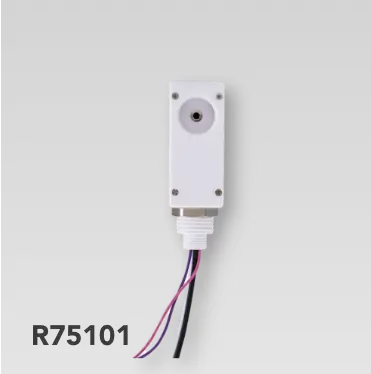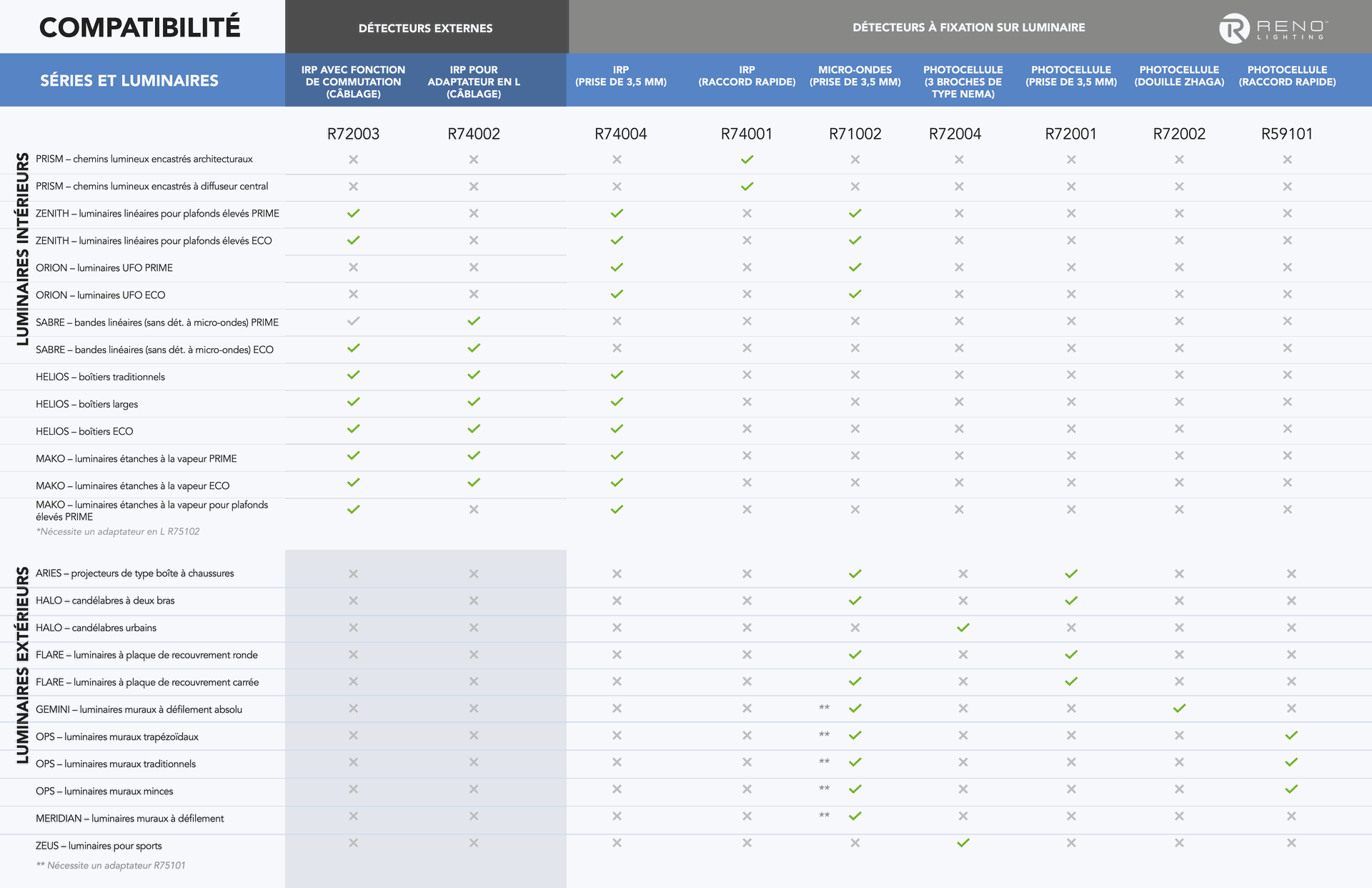Introducing our latest collection of Standalone Sensors – the perfect solution for simplifying energy management and enhancing lighting control in any space. Designed for ease of installation and seamless operation, these sensors provide reliable, independent functionality. Whether you’re looking to optimize energy usage in a single room or ensure precise lighting control in a small facility, our standalone sensors offer flexibility, cost-effectiveness, and peace of mind.
POWERFUL CONTROLS
MADE SIMPLE
STANDALONE SENSORS
ENGINEERED FOR EVERY APPLICATION

Voici notre nouvelle collection de détecteurs autonomes – la solution parfaite pour simplifier la gestion de l’énergie et améliorer le contrôle de l’éclairage dans n’importe quel espace. Ces détecteurs offrent une installation facile ainsi qu’un fonctionnement harmonieux, fiable et indépendant. Que vous cherchiez à optimiser la consommation d’énergie dans une seule pièce ou à assurer un contrôle précis de l’éclairage dans une petite installation, nos détecteurs autonomes offrent flexibilité, rentabilité et tranquillité d’esprit.
DE PUISSANTES COMMANDES D’UNE SIMPLICITÉ INÉGALÉE
DÉTECTEURS AUTONOMES
CONÇUS POUR TOUTES LES APPLICATIONS

Introducing our latest collection of Standalone Sensors – the perfect solution for simplifying energy management and enhancing lighting control in any space. Designed for ease of installation and seamless operation, these sensors provide reliable, independent functionality. Whether you’re looking to optimize energy usage in a single room or ensure precise lighting control in a small facility, our standalone sensors offer flexibility, cost-effectiveness, and peace of mind.
POWERFUL CONTROLS
MADE SIMPLE
STANDALONE SENSORS
ENGINEERED FOR EVERY APPLICATION






OFFICES & COMMERCIAL SPACES
RESTROOMS & HALLWAYS
STAIRWELLS & STORAGES
WAREHOUSES & INDUSTRIAL SPACES
PERIMETER & PATH LIGHTING
COMMON APPLICATIONS





IMMEUBLES
COMMERCIAUX
SALLES DE BAINS ET COULOIRS
CAGES D’ESCALIER ET ESPACES DE RANGEMENT
ENTREPÔTS ET ESPACES INDUSTRIELS
ÉCLAIRAGE DE PÉRIMÈTRE ET DE SENTIERS
APPLICATIONS COURANTES
A SENSOR FOR EVERY APPLICATION

DES DÉTECTEURS POUR TOUTES LES APPLICATIONS

A SENSOR FOR EVERY APPLICATION

DES DÉTECTEURS POUR TOUTES LES APPLICATIONS

CHOOSE YOUR
TYPE OF CONTROL
CHOISISSEZ LE
TYPE DE COMMANDE
QUI VOUS CONVIENT
CHOOSE YOUR
TYPE OF CONTROL
Explore our advanced lighting control solutions with PIR, microwave, or photocell technologies to boost energy efficiency and performance.
Whether you’re looking for motion detection to optimize energy use in occupied spaces or automatic lighting adjustments based on natural light, we offer a standalone sensor tailored to meet every need.

Découvrez nos solutions avancées de contrôle de l’éclairage intégrant les technologies PIR, micro-ondes ou photoconductrices pour améliorer l’efficacité énergétique et la performance.
Que vous recherchiez une détection de mouvement pour optimiser la consommation d’énergie dans les espaces occupés ou un réglage automatique de l’éclairage en fonction de la lumière naturelle, nous offrons un capteur autonome adapté à chaque besoin.

Explore our advanced lighting control solutions with PIR, microwave, or photocell technologies to boost energy efficiency and performance.
Whether you’re looking for motion detection to optimize energy use in occupied spaces or automatic lighting adjustments based on natural light, we offer a standalone sensor tailored to meet every need.

PIR ON/OFF Sensor
Hardwired (120-347V AC)
ON/OFF
Install height: up to 39 ft
Detection Radius: 20 ft
PIR “L” Adaptor Sensor
Hardwired (12V DC)
Bi-Level Dimming, Daylight
Install height: up to 39 ft
Detection Radius: 20 ft
PIR Daylight Sensor
3.5 mm Jack (12V DC)
Bi-Level Dimming, Daylight, Dusk/Dawn
Install height: up to 50 ft
Detection Radius: 20 ft
PIR Daylight Sensor
QuickConnect (12V DC)
Bi-Level Dimming, Daylight, Dusk/Dawn
Install height: up to 13 ft
Detection Radius: 20 ft
Détecteur à IRP avec fonction de commutation (câblé)
120/347 V
Sous/hors tension
Hauteur d’installation : jusqu’à 39 pi
Rayon de détection : jusqu’à 20 pi
Détecteur à IRP pour adaptateur en L (câblé)
12 V c.c.
Gradation à deux niveaux, lumière du jour
Hauteur d’installation : jusqu’à 39 pi
Rayon de détection : jusqu’à 20 pi
Détecteur à IRP (prise de 3,5 mm)
12 V c.c.
Gradation à deux niveaux, récolte de lumière du jour, crépuscule/aube Hauteur d’installation : jusqu’à 50 pi
Rayon de détection : jusqu’à 20 pi
Détecteur à IRP (raccord rapide)
12 V c.c.
Gradation à deux niveaux, récolte de lumière du jour, crépuscule/aube Hauteur d’installation : jusqu’à 13 pi
Rayon de détection : jusqu’à 20 pi
Microwave Sensor
3.5 mm Jack (12V DC)
Bi-Level Dimming, Daylight, Dusk/Dawn
Install height: up to 50 ft
Detection Radius: 20 ft
Photocell Sensor
3.5 mm Jack (12V DC)
ON/OFF
Install height: n/a
Detection Radius: n/a
Photocell Sensor
Zhaga Socket (12V DC)
ON/OFF
Install height: n/a
Detection Radius: n/a
Photocell Sensor
QuickConnect (12V DC)
ON/OFF
Install height: n/a
Detection Radius: n/a
Universal Sensor Adaptor
100-347V input / 12V output
IP65
Hardwire from fixture to connect a
3.5 mm jack sensor
Photocell (NEMA 3-Pin)
100-480V AC
ON/OFF
Détecteur à micro-ondes
(prise de 3,5 mm)
12 V c.c.
Gradation à deux niveaux, récolte de lumière du jour, crépuscule/aube Hauteur d’installation : jusqu’à 50 pi Rayon de détection : jusqu’à 20 pi
Photocellule (prise de 3,5 mm)
12 V c.c.
Sous/hors tension
Photocellule (douille Zhaga)
12 V c.c.
Sous/hors tension
Photocellule (raccord rapide)
12 V c.c.
Sous/hors tension
Photocellule (3 broches de type NEMA)
100-480 V c.a.
Sous/hors tension
Adaptateur pour détecteur universel Entrée de 100-347 V/sortie de 12 V IP65 Câblage à partir du luminaire pour connecter un détecteur à prise de 3,5 mm
Programming Remote
For programming standalone sensors
Without LCD screen display
One remote required per site
Programming Remote
For programming standalone sensors
With LCD screen display
One remote required per site
Cost-Effective, with typically lower installation costs
Simplicity, easier to install and configure without the need for an overarching control system or extensive wiring
Fewer Dependencies without having to rely on external networks or outages
Ideal for small or isolated applications where a networked solution may not be necessary
WHY STANDALONE SENSORS?
Télécommande de programmation
Pour la programmation de détecteurs autonomes Sans écran ACL
Une télécommande requise par site
Télécommande de programmation
Pour la programmation de détecteurs autonomes Avec écran ACL
Une télécommande requise par site
Rentabilité : coûts d’installation généralement plus bas
Simplicité : installation et configuration faciles, pas besoin d’utiliser un système de contrôle global ou un câblage important
Moins de dépendances : pas besoin d’avoir recours à des réseaux externes et ainsi de s’exposer à des risques de panne
Idéal pour les applications de petite taille ou isolées pour lesquelles une solution en réseau n’est pas forcément nécessaire
POURQUOI OPTER POUR LES DÉTECTEURS AUTONOMES?
Need Help with Specifying our STANDALONE SENSORS? We're here to help!
Besoin d'aide avec notre DÉTECTEURS AUTONOMES À FIXATION SUR LUMINAIRE?
CONTACTEZ-NOUS



















